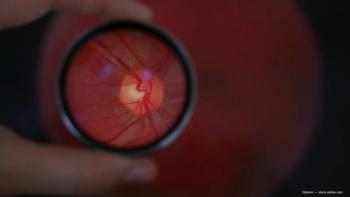
Electrical neurostimulation for glaucoma with Sunita Radhakrishnan, MD
Sunita Radhakrishnan, MD, shares insights on the use of electric neurostimulation and its potential use in the treatment of glaucoma, as evidenced by its current use in Europe and the upcoming trials for use in the US.
Sunita Radhakrishnan, MD, an associate at the Glaucoma Center of San Francisco, presented at the annual Glaucoma 360 meeting on electrical neurostimulation. She noted that while electrical stimulation therapy has a long history in neurology, it is relatively new in ophthalmology.
The primary interest in electrical stimulation for the eye is its potential to improve visual function, which is currently unmatched by any other glaucoma treatment. The most studied type of stimulation is called rtACS, which involves repetitive, transorbital, alternating current stimulation. This was first developed in Germany by Prof. Bernhard Sabel over a decade ago, and has been used in his clinic, as well as a few other centers using proprietary devices. There is also a commercially available rtACS device called Eyetronic, though it is not covered by insurance. Trials of rtACS in Germany have shown some improvement in vision, particularly in patients with various optic neuropathies.
A recent 2022 retrospective study focused specifically on glaucoma patients who were progressing despite IOP lowering treatment. This study found that one year after rtACS treatment, these patients had either stabilized or improved in their mean deviation, which is unusual for the natural progression of glaucoma. Radhakrishnan expressed optimism about this treatment approach and announces that her center will be a site for a upcoming US study using the Itronic rtACS device, with plans to recruit patients this year.
She also discussed other positive developments in glaucoma care, such as the explosion of MIGS options and increased awareness of dry eye in glaucoma patients. However, she noted challenges in predicting progression risk and a continued need for neuroprotective treatments. Overall, the conversation highlighted the potential of electrical neurostimulation as an innovative new therapy for glaucoma, while also acknowledging the need for further research and clinical trials to fully evaluate its efficacy.
Newsletter
Don’t miss out—get Ophthalmology Times updates on the latest clinical advancements and expert interviews, straight to your inbox.








































